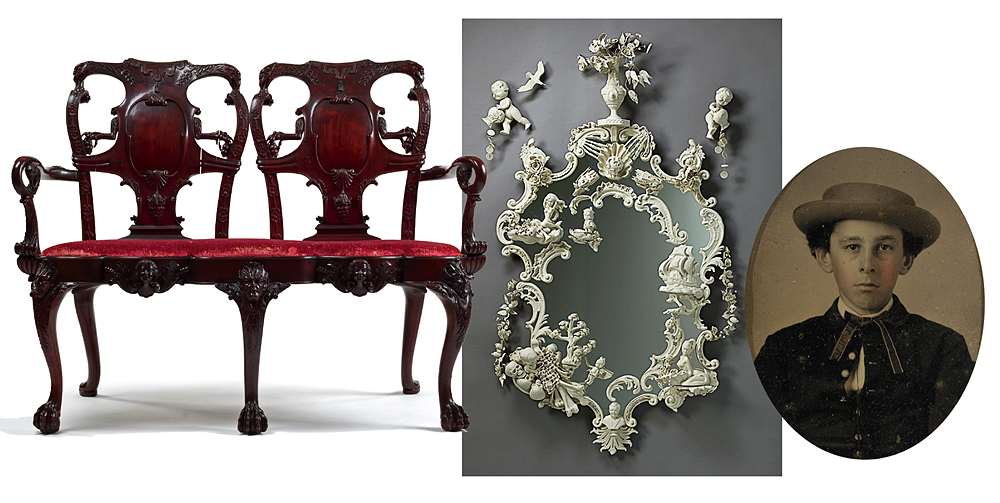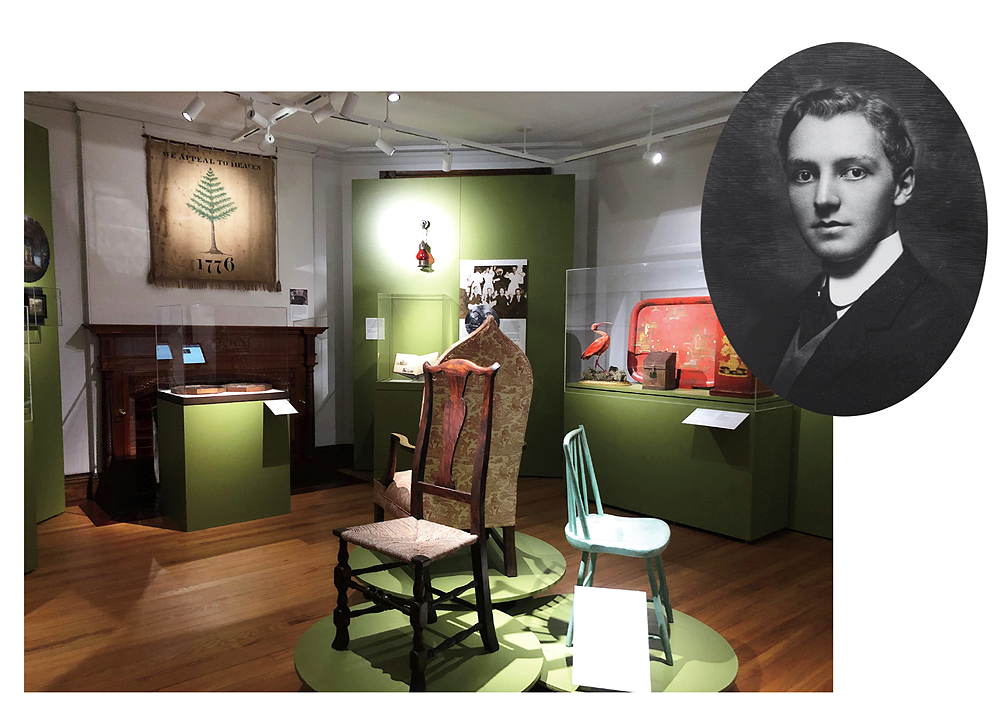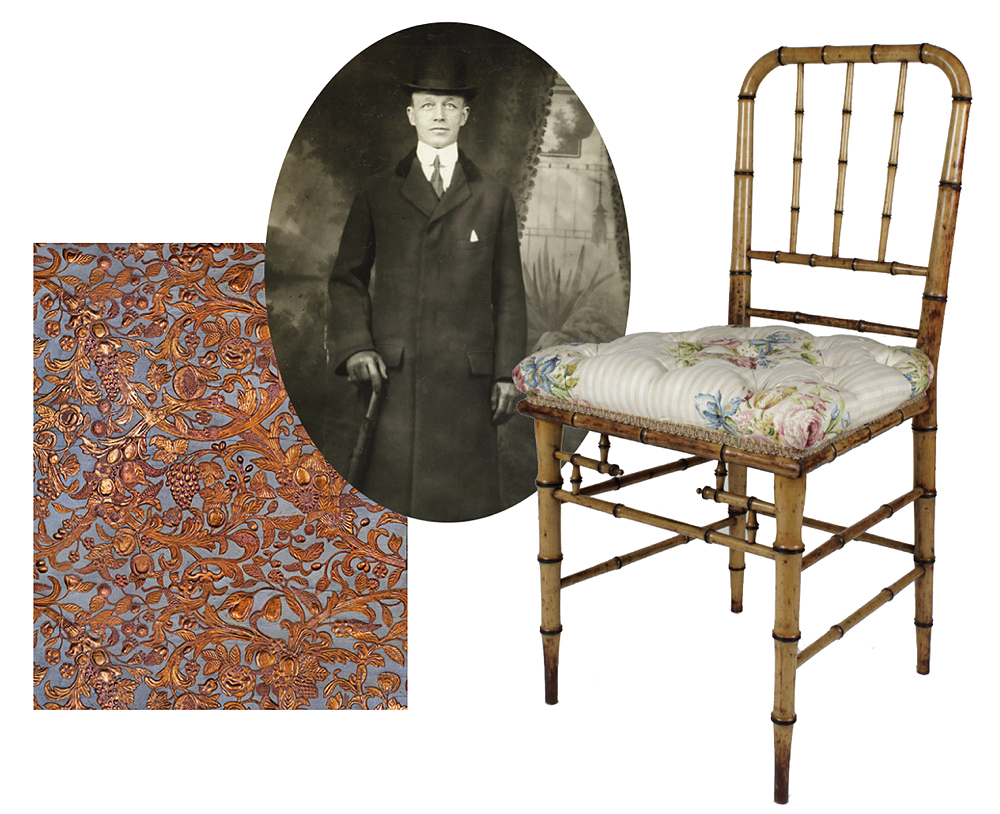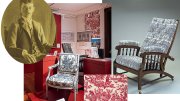Architect Ogden Codman Jr. grew up in the shadow of two men: his great grandfather John and his “bad uncle Richard.” John Codman III embodied ideals of the English aristocracy, and dutifully expanded the family’s gracious Codman Estate in Lincoln, Massachusetts. His brother Richard, however, “goes off to Europe, spends the family money on villas and chateaus and all sorts of debauchery, and is a real Francophile,” notes Historic New England curator Erica Lome. Ultimately, Codman Jr., whose life straddled the nineteenth and twentieth centuries, artistically manifested the tension between these two paths, creating an eclectic interior at the estate that melded historic and contemporary styles while articulating his unique self-expression.

This entwining of aesthetics is explored through Importance of Being Furnished: Four Bachelors at Home, an exhibition mounted by Historic New England that’s based on the eponymous book, published in June, by Wheaton College’s professor of the history of art R. Tripp Evans.
On display at the Eustis Estate, in Milton, Massachusetts, through October 27, the show offers “the story of four men who all came from the same background, milieu, all of whom grew up and were inspired by Oscar Wilde’s ideas and writings that the bachelor home was a space where beauty was its own reward,” Lome notes, and where “home” served as a haven apart from the traditional purpose of housing a family, marriage, and children. Aside from Codman, the exhibit spotlights: socialite Charles Hammond Gibson, of Back Bay, Boston, and designer Henry Davis Sleeper, who built his Gloucester home Beauport, the Sleeper-McCann House, along with antiques dealer Charles Leonard Pendleton, who bequeathed his collection of American decorative arts and furnishings to the Rhode Island School of Design Museum.

At the Eustis Estate are four gallery rooms, each one devoted to a man and his home. Select furniture, objects, and artifacts, along with letters, photographs, and biographical notes flesh out their lives and work. In the Codman room, lavish French-made yellow and rose curtains, a gilt sconce, and favored French harbor painting frame one wall, while portraits of the ancestral Codman brothers John and Richard, by John Singleton Copley hang on another. Two chairs—one representing the French Revival style and another the later arts-and-craft movement—show Codman Jr.’s breadth. Move next door, and the Pendleton room has photographs of his abode, richly layered with Turkish carpets, Chinese porcelain, and minor old masters’ paintings. Chairs and a bedstead on display reflect his tendency to mix and match parts of period pieces with less valuable items, resulting in styles interestingly cobbled together but camouflaging authenticity. “He enjoyed the eclectic persona of the collector,” Lome says, “but he amassed great gambling debts, which he concealed. His whole life was about duplicity and deception” —albeit much in the name of artistry. The theatrical Sleeper, who had a more refined design talent, also eschewed historic accuracy in his meticulous rooms. He painted antique Winthrop chairs seafoam green (one is on display) and collected other chairs with a faux woodgrain, so they fit with his decorative vision, Lome notes; one Jacobean-looking chair in the octagon room was mocked-up by his carpenter.
Historically, the aesthetic styles of these “bachelor decorators” span the Gilded Age to the Jazz Age, shedding light on the rise of American interior design. But the personal nature of these homes—the self-expression and forging of identity through objects, the social havens created—speak to an homage to the emerging expression of male gay culture. “These were men not necessarily concerned with living up to the heteronormative ideals of society,” Lome says. “All of them went their own ways romantically, sexually, and otherwise and lived outside the norms of their society while still working within them.”

The curatorial challenge, she says, lay in the fundamental question: “Can you extract from these homes the essence of how the men designed and thought?” The exhibit offers a tantalizing glimpse of how these individuals worked to express themselves and their creativity within their more restrictive era—as well as providing a good reason to make the full-fledged trips to their historic homes.








